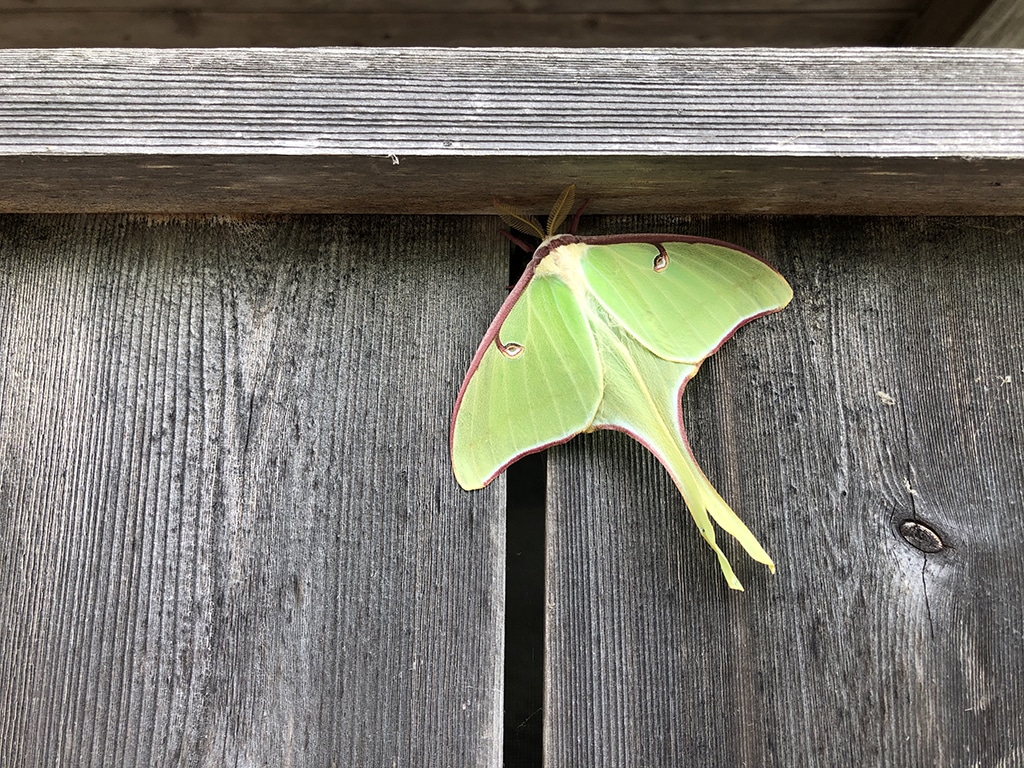
If you have been following Maine Audubon’s and other organizations’ social media (follow our Moth Week fun on Instagram!) regarding National Moth Week, you may have fallen in love with a moth or two. And back in June, Aislinn Sarnacki of the Bangor Daily News wrote an article about how to find and observe the moths around us. But how do we improve the habitat around us and attract more of these moths?
Maine Audubon’s “Bringing Nature Home” initiative is all about restoring native host plants–those that support the caterpillars of native butterflies and moths, which in turn provide critical food for birds nesting in Maine. For example, milkweeds in genus Asclepias host Monarch butterfly caterpillars–they can only survive by eating those leaves. Monarchs are specialists of one genus, but many other species can be hosted by several different genera.
If you want to better manage for species of moths, you need their host plants to attract females to lay their eggs, and to make more of these moths around you. Thanks to the Internet and several useful tools, matching plants to the ecological benefits and ecosystem services they provide has never been easier. Follow this step-by-step guide to become a better moth manager.
Step One: Choose a species of moth that you know does occur or should occur around you. Use Maine artist and mothing enthusiast Jada Fitch‘s beautiful artwork as a guide.
Step Two: Visit Doug Tallamy’s incredible database on the National Wildlife Federation website and enter your zip code. This will match you with all of the historical records associated with your area.
Step Three: After you’ve perused the plants that show up and numbers of caterpillars they have historically hosted in your area, enter the name of your new favorite moth in the search bar in the upper right.
Step Four: Your results will show the genera of plants that have been recorded hosting the caterpillars from this moth in your zip code. Once you’ve got some plants on your list, visit mainenativeplants.org to learn how and where they like to grow
Step Five: Buy and start growing one or more of those plants in your yard or garden, and encourage your neighbors to do the same. Place your order at shop.mainenativeplants.org for curbside pickup at our Gilsland Farm Audubon Center Falmouth location.
